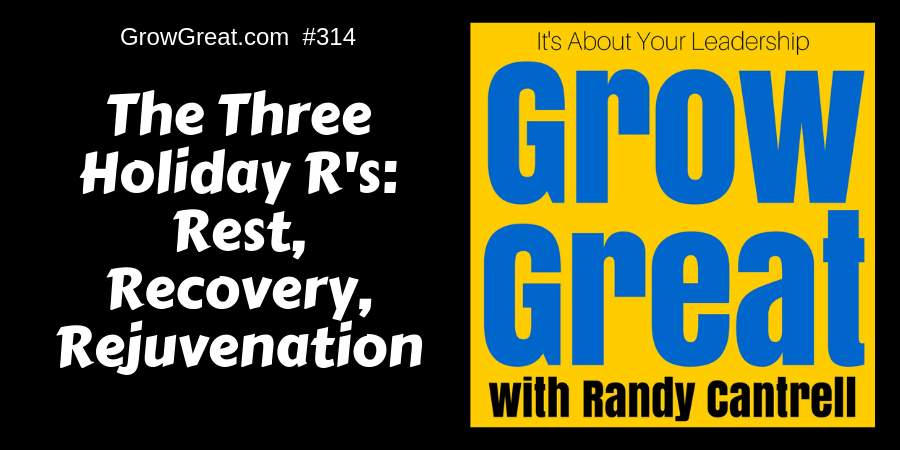You Have To Understand Why You’re Winning And Why You’re Losing (319)
Podcast: Play in new window | Download (Duration: 11:59 — 11.3MB)
Subscribe: Apple Podcasts | Spotify | Email | RSS | More
True confession: I’m not a baseball fan. I only watch it when the league championship finals begin. But I recently heard a radio interview with the manager of the Texas Rangers, Chris “Woody” Woodward. While answering a question about what being a first-year major league manager he uttered that quote.
You have to understand why you’re winning and why you’re losing.
He went on to reiterate the importance of a major league baseball team to know why what they’re doing is providing whatever result they happen to be experiencing at the moment. Baseball, because of the sheer number of games played, can throw teams into slumps and winning streaks. Woody wants his team to understand why it’s happening.
The interviewers didn’t do what I had hoped. They neglected to probe further. I was curious to know more. Maybe it’s because I’m not a baseball guy. Perhaps baseball fans just understand things I don’t. But it didn’t make me think about our world of business.
Business, like baseball, is a long season (well, we sure hope it is). We’ve all experienced slumps. Hopefully, we’ve also experienced some winning streaks to offset those. I’m not sure we always understand why. Maybe business is so dramatically different from baseball – I suspect that’s the case.
Take advertising. A company can create an ad campaign that spikes sales. It seems to be working as expected. But in time, it stops working. Why?
Advertising seems to be THE big variable that’s awfully hard to understand. It’s why that old quote from John Wanamaker is so true.
Half the money I spend on advertising is wasted; the trouble is I don’t know which half.
I’ve never managed a baseball team, but I’ve managed businesses for decades. Understanding is difficult. Sometimes it’s tough to know why you’re winning. Harder still to know why you’re losing.

There are days when we’re like Nelson. It feels like we’re staring at Makes No Sense, Inc. and have no clues.
What can we do? I can’t promise that you’ll always figure it out and understand, but you ought to try. It’s learning and it’s necessary for growth.
Step 1 – Don’t ignore trying to understand success.
In our quest to understand why we’re winning or why we’re losing it’s easy to focus on the losing, not the winning. That’s why it’s more commonplace for companies to devote time to blaming people, but they neglect celebrations. It’s like the parent who ignores A’s on the kid’s report card but pitches a wild-eyed fit when a C comes home.
Donald O. Clifton is the father of Strengthsfinder. He wrote a book many years ago – the precursor to the Strengthsfinder work – entitled, “Soar With Your Strengths.” I devoured the book when it was first published. It made total sense to me, especially as a parent and a leader. Why try to make yourself or others something they’re not. Instead, lead with your strengths. Improve what you’re already good at. In a similar fashion, don’t ignore dissecting success. Figure out why things are working well so you can do more of it.
Step 2 – Ask others.
I’m still trying to figure out why this is so difficult. Especially when it comes to learning and understanding. People slightly older to much older than me have always been the chief folks I’ve looked to for understanding. I want to know what they may be able to teach me. I’ve never found it difficult to learn from older people – especially men (since I’m a man) with whom I’ve invested time to forge a trusting relationship. A small circle of men has helped me navigate the choppiest waters of my life. I can’t imagine going it alone. I’m encouraging you not to.
Others have helped me eliminate blind spots I didn’t even know I had. They’ve prevented me from being stagnant in my understanding of a variety of things. Others can do the same thing for you.
No matter how smart you are, you’re not THAT smart. Nobody is. You’re not smart enough to consider or see everything. And you’re not smart enough to always understand why something is working well or why something else isn’t working at all. You need the perspective of others. If you don’t seek it out and listen, you’re the bigger fool.
Step 3 – Look for patterns.
Life is patterns. Success and failure both have their own patterns. As you’d imagine, they’re not the same. Patterns of success don’t look like the patterns of failure.
When you’re looking to understand why something is working you’re going to see – if you look long enough and closely enough – patterns emerge. One thing leads to something else, which leads to a thing that seems to make a positive difference. The same thing happens with failure…a chain of events will lead to something that seems to throw the wheels off wrecking success.
If you’ll devote time to looking for and at patterns, you’ll see them. It takes practice. That’s why you need to practice it.
The problem is connecting dots that may not be connected. That makes pattern recognition difficult. It’s another reason why step 2 is so important – asking others. You may see a pattern that isn’t a pattern at all. Others can help you see whether it’s a pattern or not.
Step 4 – Question what you connect. Put it on trial and find out what changed.
Again, others can help you best do this. Am I seeing a pattern? Am I connecting dots that truly are connected?
A big part of this step is to figure out what has changed. This is especially helpful when we’re just finding success or when success is beginning to fail. What changed?
As we examine what patterns we’re likely going to spot something that is now different. Maybe it’s big. Maybe it’s subtle.
A business begins to experience a drop in profit margins. They dive into to figure out why. Nothing leaps out at them at first because the top line numbers seem appropriate. It’s not like there’s been some sudden rash of discounts offered. Something changed? What?
Turns out two big accounts slowed down. Just slightly. But that prompted something that wasn’t looked at too carefully at first. The travel and entertainment budgets for these two accounts shot up dramatically driving costs higher. Fearful that the downturn might keep going south sales management pushed more chips into the middle of the table to woo these two big accounts. It wasn’t working. At least, not yet. But it ruined the margins companywide.
Something indeed had changed. You need to find out what changed. For good. Or bad.
Step 5 – Keep asking questions and keep seeking insights from others.
Don’t make this a one-off exercise. Keep it going.
Become a professional business autopsy expert inside your own business. Develop, maintain and grow your curiosity about what causes success and failure. It provides the answers you most seek. It provides guidance so you know what to do. Otherwise, you’re just taking a blind stab in the dark. Much better to see what you’re aiming at. So be thoughtful, mindful, intentional and purposeful. That’ll help you shorten the losing streaks and lengthen the winning ones.
Be well. Do good. Grow great!
Randy
You Have To Understand Why You’re Winning And Why You’re Losing (319) Read More »





